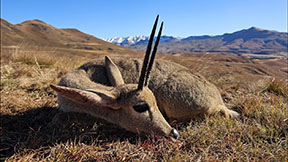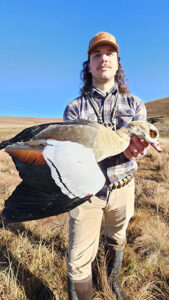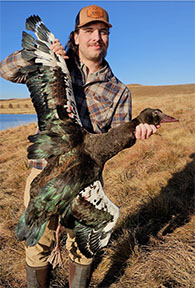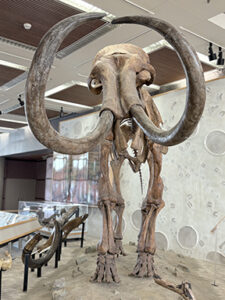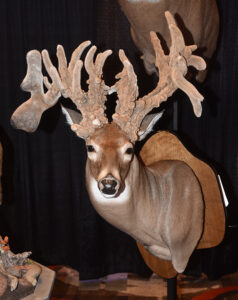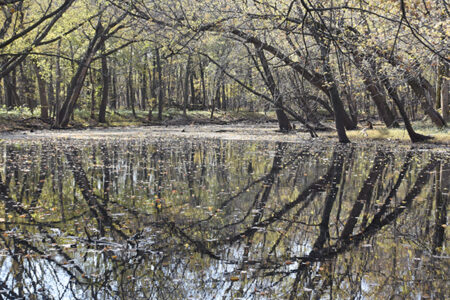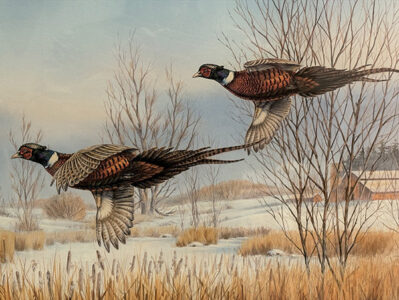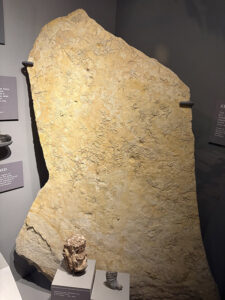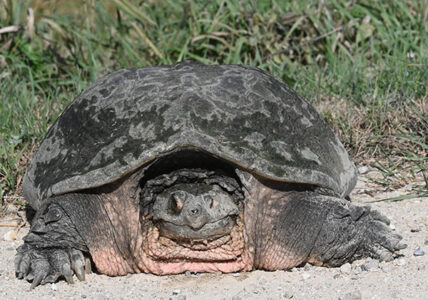Waterfowl hunting in Africa presentation Oct. 8
OCTOBER IS HERE. Yippee. This is a special month every year when cooler air will arrive in due time.
Oct. 1 had a day length for central Iowa of 11 hours and 46 minutes. By the 31st, day length will have shortened by 1 hour and 21 minutes to just 10 hours and 25 minutes.
Earth’s orbit around the sun is a very predictable passing of time, doing what it has been doing for at least 4.5 billion years. Now in historical times as people keep records of events, nature’s seasons cycle through Spring, Summer, Fall and the coming Winter.
Harvest activities by farmers are well underway. Fruit trees have ripening products hanging heavy from their limbs. Bushes with berries offer birds plenty of snacks.
Flowers offer pollen for butterflies and bees. Tall prairie grasses are in their prime with fluffy seed heads waving in the wind. Pheasants are crowing their cackling calls.
Migrating birds are congregating and flying southward in greater and greater numbers. Deciduous trees will soon join the chorus as their leaf colors inevitably adapt to shorter day lengths.
Here are other things of the outdoor world happening during October. For starters, tree leaf color changes will proceed from northern to central and into southern Iowa like the fine tuning of a well built clock.
In this case, it is Mother Nature’s clock ticking away second by second, minute by minute, hour by hour and day by day. We all know that leaf color will happen. Tree leaf color is somewhat dependent upon the species of tree.
However it takes place, the easy thing to do is enjoy a nature hike on a park trail anytime this month. Every week will be different and new colors will emerge.
Reds will appear on maple trees along with bright yellows. Maroon colors on sumac, dogwood and Virginia creeper vines offer deep red contrasts. Yellows will appear on walnut, cottonwood, basswood, elm and hackberry trees.
Fewer leaves may reveal hidden bird nests from this past summer. Squirrel nests will also be revealed high into forked branches where the wind is less effective at disruption.
October is a good time to plant trees. Warm soils will let roots establish themselves a bit before frosty times puts tree life into a slumber mode. Then next spring, those trees will be ready to sprout new leaves as they begin growing into bigger and better specimens.
A historic first killing frost can be expected, on average, on or about Oct. 18. Averages being what they are means sometimes frosts happen earlier or later.
Every year is a bit different. Snow is not too likely in October, however, it has happened before in mid-October. A heavy wet early snow a few decades in the past fell on colored tree leaves. The snow was wet and heavy, and it broke tree branches at homes and in park areas. I was at Grammer Grove during such a time listening to loud cracking sounds of falling branches in the nearby forest.
It would not have been a good day to hike trails. Once the snow melted, hiking trails were littered with small, medium and sometimes large tree debris.
A historic late October Halloween snow storm/blizzard in 1991 left 16 inches of snow in northwest Iowa. Wind gust speeds were clocked at 60 mph.
Ice also accumulated from Clarinda to Forest City. Mother Nature’s advice is simple: be prepared for lots of average “Indian Summer” weather, and perhaps a few surprises mixed in that give us humans only one option — adapt and carry on.
——–
A Chili Supper is planned for the members and guests at the Izaak Walton League on Wednesday, Oct. 8. Serving will begin at about 6 p.m.
Bring your own service settings please. Enjoy good company and then after all the eating is finished, enjoy an adventure program about waterfowl hunting in Africa. Local resident Sam Dixon will present a power point show on his vacation trip to Africa in June of this year.
Dixon will offer insights into air travel requirements, host safari operator booking, and what one can expect if wing-shooting (ducks and geese primarily) is what one desires to partake in. Waterfowl hunting in another country comes with new species native to those lands, things that are different in some ways and similar in others. Learn what to expect on an African waterfowl adventure.
The Marshall County Chapter of the national organization of the Izaak Walton League of America is just one of many chapters in Iowa, the Midwest and the Nation. They are dedicated to conservation of land, clean air and water, and how people can enjoy and be involved with numerous activities in the outdoor world.
A clay bird sporting clay shoot is going to take place Sunday, Oct. 5 at the Ikes grounds. Registration will begin at 8 a.m and go until 2 p.m. Ten stations of ten birds each for 100 total will be offered. The course will include single, doubles and rabbit stations for a wide variety of simulating hunting scenarios.
——–
SEPTEMBER RAIN RECORDS by this author at his home in Albion were dutifully tallied after each rain. Total September rains came to 2.70 inches. Adding this number into total rains since March provides this number — 29.44 inches so far for the year.
——–
BIRD MIGRATION happenings are really neat — if you are at the right place at the right time. For instance, while avid bird watcher Mark Proescholdt of Liscomb was at Grammer Grove during one of his recent hawk watching forays, he looked up to see a spectacle many people never see.
It was a sky full of Broad-winged Hawks at all altitude levels. How many? His estimate was at least 800 birds during his observation time frame.
This is no exaggeration of how many birds of prey can be in the sky just at one location. The Iowa River corridor, like all river pathways, offer similar hawk watching opportunities. Broad-winged hawks are well noted for gathering together and migrating in mass numbers.
Another instance of right time, right place was Sept. 30, just after sunset, at the Mann Wetland near Albion’s south side.
This wetland and reconstructed prairie conservation area was a staging area for small song birds of many species. I happened to be driving past when it was quite apparent that the wetland marsh vegetation was heavily dotted with perched birds.
So also were the utility company power lines along the road edge. The wires looked like a line up of birds all sitting about six inches apart. When I stopped to put binoculars on the birds, I saw primarily red-winged blackbirds, grackles and starlings, and the numbers were not just a few hundred, or a few thousand, but more in line with estimates of tens of thousands. It was awesome to see and listen to.
From information I have read and learned about, night time migration of birds is typical. Not too long after sunset, huge flocks of birds take wing and move south.
Radar weather operators have learned to recognize and differentiate between the signals of birds in contrast to rain storms or aircraft movements. My early morning recheck of the Mann Wetland marsh told the story.
All those multi-thousands of birds were gone. Yes, a few remained but only in much smaller numbers.
I will be rechecking how the wetland habitat is working to hold additional small and large birds as migration tempo continues. October is starting out very well. Outdoors adventures are calling us to get outside.
——–
Quote to note: “Joy in looking and comprehending is nature’s most beautiful gift.”
— Albert Einstein
——–
Garry Brandenburg is the retired director of the Marshall County Conservation Board. He is a graduate of Iowa State University with a BS degree in Fish & Wildlife Biology.
Contact him at:
P.O. Box 96
Albion, IA 50005
- PROVIDED PHOTOS — A local sportsman, Sam Dixon, journeyed to Africa from June 9-17 primarily to hunt waterfowl. His adventure hunt will be the special fall presentation program at the Izaak Walton League’s Chili Supper the evening of October 8th at 6:45 p.m. Come learn about duck and goose hunting in Africa from an avid waterfowler. All are invited to attend while enjoying various chili recipes prepared by Ikes members. Freewill donations are accepted to help with Ike’s projects. Today’s photos show Dixon with an Egyptian goose, a Spur-winged goose and a Vaal Rhebok. He did take many other water birds and additional plains game animals. The Izaak Walton League club house will be the chili supper location, located two miles south of Iowa Avenue on Smith Avenue. Any area waterfowl hunters may be especially interested in how the sport is catered to in Africa.

